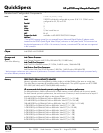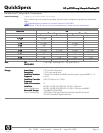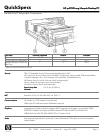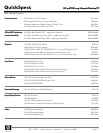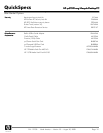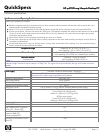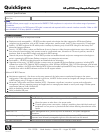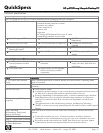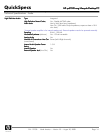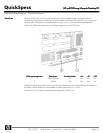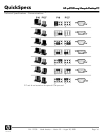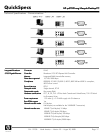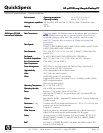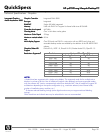
Serviceability Features of System
Serviceability Features of SystemServiceability Features of System
Serviceability Features of System
Dual Color Power LED on Front of Computer (Indicates Normal Operations and Fault Conditions)
Diagnostic LED Explanation Table
Number of 1-second red LED blinks followed by 2-second pause, then repeats:
2-processor thermal protection activated
3-processor not installed
4-power supply failure
5-memory error
6-video error
7-PCA failure (ROM detected failure prior to video)
8-invalid ROM, bootblock recover mode
System/Emergency ROM
Flash ROM
CMOS Battery Holder for easy
Replacement
Flash Recovery with Video
3.3V Aux Power LED on System PCA
Processor ZIF Socket for easy
Upgrade
Over-Temp Warning on Screen
(Requires IM Agents)
Clear Password Jumper
DIMM Connectors for easy Upgrade
Restore CD
Clear CMOS Jumper
NIC LEDs (integrated) (Green &
Amber)
Serviceability Features of Chassis
Serviceability Features of ChassisServiceability Features of Chassis
Serviceability Features of Chassis
Dual Color Power LED – To indicate
normal operations and fault
conditions
Color coordinated cables and
connectors
Tool-less removal of hood power
supply, slot cover, hard drive and
optical drive
Front power switch
System memory can be upgraded
without removing any internal
components
Feature
FeatureFeature
Feature
Description
DescriptionDescription
Description
ASF 2.0 support (Alert Standard
Format)
Industry-standard specification for network alerting and remote control in operating system-
absent environments
Towerable
Product can be oriented as a tower using standard tower stand (in addition to desktop
orientation)
Drive Self Tests (DPS)
Drive Protection System
A diagnostic hard drive self test. It scans critical physical components and every sector of
the hard drive for physical faults and then reports any faults to the user.
Running independently of the operating system, it can be accessed through a Windows-
based diagnostics utility or through the computer's setup procedure. It produces an
evaluation on whether the hard drive is the source of the problem and needs to be
replaced.
The system expands on the Self-Monitoring, Analysis, and Reporting Technology
(SMART), a continuously running systems diagnostic that alerts the user to certain types of
failures.
DPS Access through F10 Setup
during Boot
SMART Technology
(Self-Monitoring, Analysis and
Reporting Technology)
Allows hard drives to monitor their own health and to raise flags if imminent failures were
predicted
Predicts failures before they occur. Tracks fault prediction and failure indication
parameters such as re-allocated sector count, spin retry count, calibration retry count
By avoiding actual hard drive failures, SMART hard drives act as "insurance" against
unplanned user downtime and potential data loss from hard drive failure
SMART I – Drive Failure Prediction
SMART II – Off-Line Data Collection
SMART III – Off-Line Read Scanning
with Defect Reallocation
QuickSpecs
HP rp5700 Long Lifecycle Desktop PC
HP rp5700 Long Lifecycle Desktop PCHP rp5700 Long Lifecycle Desktop PC
HP rp5700 Long Lifecycle Desktop PC
Technical Specifications
DA - 12758 North America — Version 18 — August 20, 2008
Page 13



